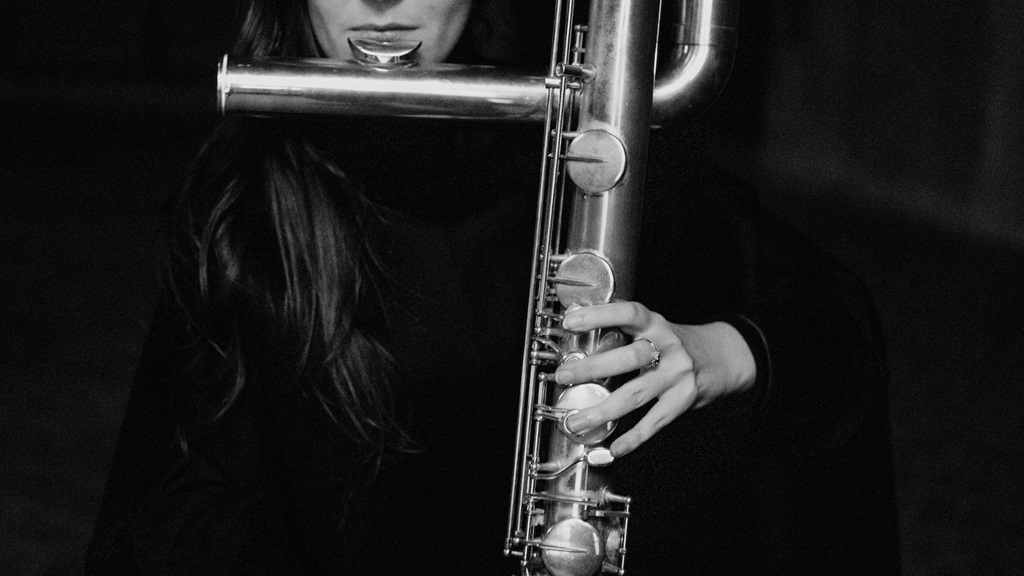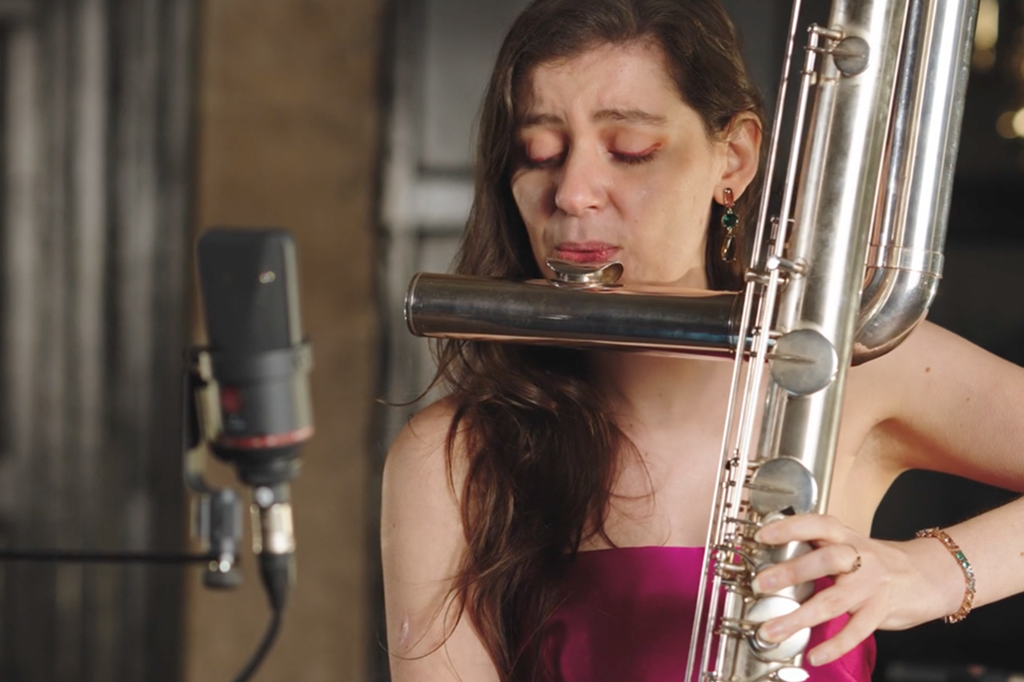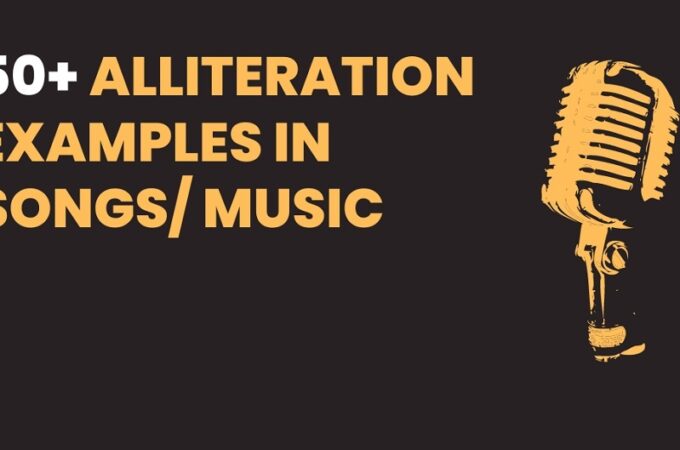
What is the Difference Between a Contrabass Flute and a Bass Flute?
The contrabass flute and bass flute are both large members of the flute family, but they have some key differences that affect their sound, range, technique, and usage. As a flutist, it’s important to understand the unique attributes of each instrument.
In this comprehensive guide, we’ll cover everything you need to know about the similarities and differences between the contrabass flute and bass flute, including:
- History and origins
- Construction and design
- Pitch ranges
- Tone quality and timbre
- Technique and fingering
- Repertoire and usage in music
- Care and maintenance
- Costs and accessibility
By the end, you’ll have a clear understanding of how these two large flutes compare and what makes each one unique. Whether you’re a curious flutist, composer, conductor or just a lover of wind instruments, read on to learn more about the marvelous contrabass and bass flutes!
Table of Contents
ToggleHistory and Origins
The contrabass flute is the bigger and lower pitched cousin of the bass flute. Both instruments were preceded by the relatively uncommon double contrabass flute, which was even larger and lower. Let’s take a look at the origins of each:
Contrabass Flute History
The contrabass flute was developed in the early 20th century as an experiment to extend the range of the flute family downwards. Flutemakers began crafting these behemoth flutes in the 1910s and 1920s, with the first playable contrabass flutes emerging in the late 1920s.
Early models were made from metal and had a conical bore, giving them a mellow, gentle tone. In the 1980s, the contrabass flute began gaining popularity in flute choirs and some orchestral works, prompting makers to produce more affordable models in PVC and ABS plastic. These use a cylindrical bore for better projection in ensembles. Today, contrabass flutes are played by amateurs and professionals alike in varying musical settings.
Bass Flute History
The bass flute has its origins in the 1850s, when French manufacturer G.A. Chardin developed a wider-bored model of the modern wooden Boehm system flute pitched one octave below the concert flute. This gave it a warm, rich tone in the tenor register.
At the time, it was known by several names including the Tenor Flute, Quart-Flute, and Flûte-Basse. Throughout the late 19th and early 20th century, the bass flute grew in popularity as an orchestral and ensemble instrument. Key improvements were made to its keywork, with modern silver-plated bass flutes having reached a standard design by the 1940s.
So in summary, the contrabass flute came later as an experimental very low flute, while the bass flute has longer standing as the tenor voice of the flute family. Now let’s look at how these origins affect their construction.
Construction and Design
The contrabass flute and bass flute have significant differences when it comes to their physical construction, which affects their tone production, quality, weight, and handling.
Contrabass Flute Construction

Modern contrabass flutes are most commonly made of ABS or PVC plastic, with some professional models using metal. PVC provides an affordable, lightweight and weather-resistant option well-suited to the large tube lengths, while ABS offers superior tonal resonance. Metal provides the richest tone but is more expensive and fragile.
Contrabass flutes have a conical bore, meaning the tubing gradually widens along its length. This gives them a mellow, gentle tone even at their extreme low pitches. They typically have a wider embouchure hole and larger tone holes than typical flutes to produce their deep tones with more ease and resonance. Offset G keys are common to improve intonation.
Given their large size, most contrabasses come with a frame to support the weight while playing. They use thick tubing (typically 2 cm diameter) and have a coiled head joint for compactness. Standard models are around 5 feet long, though sizes can vary. Professionals may use customized extended range models exceeding 6 feet. The contrabass flute weighs 5-7 lbs on average.
Bass Flute Construction
Modern bass flutes are almost always made of silver-plated nickel or gold, with some using more expensive platinum, rose gold, and other alloys. Their tubing is drawn thin to maximize resonance and tone projection, ranging from 0.7-0.8mm thick.
In contrast to the contrabass flute, bass flutes utilize a cylindrical bore for improved focus and directness of tone. Keywork is similar to a concert flute but enlarged. Bass flutes have a wider embouchure hole and tubing of around 1.7cm diameter.
Professional models feature a C-foot rather than B-foot, extending the range down a half-step. Offset G keys, gizmo keys, and bullnose key mechanisms also assist with tone production, intonation, and fingering ease. Bass flutes are around 4 feet long and weigh 3-4 lbs. The lower weight allows them to be held comfortably without a stand.
In summary, contrabasses use more affordable thermoplastics and a conical bore while bass flutes utilize precious metals and a cylindrical bore for optimal resonance and projection. The bass is also smaller and lighter in build.
Pitch Range
The contrabass flute and bass flute occupy different pitch registers, though they do have some overlapping notes. Here’s how their ranges compare:
Contrabass Flute Range
The contrabass flute is pitched in C, three octaves below the concert flute (two octaves below the bass flute). Its written range extends from the C two octaves below middle C to the C two octaves above, though the lower octave requires advanced embouchure control. Notes near the bottom of the range speak with difficulty and lack tone.
In practice, most contrabass flute music is written from the C below middle C and up. Contrabass parts sometimes include optional 8va markings to bring passages up an octave for playability. The lowest notes are seldom used except for occasional special effects.
Bass Flute Range
The bass flute is a transposing instrument pitched in C, one octave below the concert flute. Its written range extends from the B below middle C up to the C three octaves above middle C. Advanced players can eke out an additional half-step at the top.
Unlike the contrabass flute, the bass flute’s entire range is readily playable, resonant, and controlled. Notes below the bass clef staff can speak slower and require careful voicing but are strong and balanced when played well.
In summary, the bass flute essentially sits an octave above the playable range of the contrabass flute, with some minor overlap in their bottom ranges. The bass flute’s range is more fully resonant and accessible.
Tone Quality and Timbre
The tone qualities of the two instruments also differ substantially:
Contrabass Flute Tone
The contrabass flute has a warm, rich, mellow sound in its mid-upper registers when played well. Its tone becomes unfocused at the extremes but can evoke powerful sonorities in the hands of an experienced player. Volume and projection are limited due to issues with achieving clean articulation and breath control on the largest flutes.
Bass Flute Tone
The bass flute has a focused, clear and projecting tone across all registers. Its timbre is warm and lush while retaining some brightness and flexibility. Notes resonate more strongly than the contrabass flute. While still low in pitch, the bass flute can cut through ensembles with proper breath support. Vibrato is easier to control than the contrabass.
In summary, the bass flute provides greater tonal control and projection, while the contrabass flute produces a gentle, enveloping sound when played in its mid-range. The bass flute can pierce through groups more readily.
Technique and Fingering
The larger size and different construction of these flutes affect playing technique:
Contrabass Flute Technique
Contrabass flutes require specialized breathing techniques to produce tone and vibrate the large column of air. Fast air speeds are needed but require control to avoid cracked notes. Embouchure flexibility is critical, along with voicing adjustments between registers.
Fingering is like the concert flute but requires longer reaches between keys. Intonation and resonance are harder to control. Articulation is difficult on the lowest notes.
Contrabass parts are sparsely written to accommodate its playing challenges. Glissandos, pitch bends, and other effects are utilized where possible. Standing or sitting with an adjustable flute peg is necessary to support the weight while playing.
Bass Flute Technique
The bass flute requires a relaxed embouchure for flexible voicing and overtone control. Mastery of slow, steady airstream and vibrato are needed to resonate its low pitches.
Fingering technique closely mirrors the concert flute, benefiting players doubling on both instruments. Intonation and resonance are better controlled than the contrabass. Articulation is clear across all registers.
Parts can be as complex as skill allows since all notes speak well. Weight is manageable either seated or with a neck strap. Adapting breath support between the bass and other flutes takes practice.
In summary, the bass flute is more accessible technique-wise for intermediate and advanced flutists, while the contrabass requires special breathing and embouchure adaptations.
Repertoire and Usage in Music
The bass and contrabass flutes lend themselves to different musical genres and ensemble roles:
Contrabass Flute Repertoire and Usage
The contrabass flute is best used as a specialty color instrument for unique low sonorities, textures, and bass lines. It mainly appears in flute ensembles, though some modern classical and film compositions feature it. Jazz and some world music genres also utilize its distinctive warm tones.
Due to its balance issues and technical demands, contrabass parts tend to be slow, sparse and idiomatic. It cannot play quick passagework or intricate parts above a moderate tempo. Orchestral composers must carefully consider playability and mix when writing for contrabass flute.
Bass Flute Repertoire and Usage
With its focused tone and wider playable range, the bass flute can be used more extensively across genres. Orchestral composers frequently assign it musically complex solo and section parts. It is also popular in concert band, jazz big band, and other large ensembles.
The bass flute can handle quick chromatic passages, arpeggios, and embellishments in the hands of a good player. It adds harmonic richness, melodic interest, and oozing lushness when combined with other woodwinds.
In summary, the bass flute has wider musical versatility while the contrabass is best used for occasional color and effects. Listeners quickly pick up on the contrabass’ unique voice.
Care and Maintenance
Proper care differs slightly between these woodwinds:
Contrabass Flute Care
Plastic contrabass flutes must be kept clean and swabbed out to avoid buildup in the long air column. Joints should be greased lightly during assembly.
Metal models require more careful handling, polishing, and prevention of condensation buildup inside the tubing. Extended disuse requires bore oiling. Pads must be replaced as needed by a repair tech.
Given its size, the instrument is best transported in a hard flight case with a custom padding insert. A stand is needed for storage and playing. Precautions are required as negligence can easily lead to expensive damage.
Bass Flute Care
Similar care is needed for the bass flute as a concert flute. Tarnish and buildup must be controlled while avoiding over-cleaning the delicate metal. Light key and pad oiling is advisable.
A convertible hard/soft case provides protection during transport. A plastic cover prevents denting while playing. Aside from more careful handling of its larger keys and rods, maintenance is straightforward for experienced flutists.
In summary, the contrabass flute requires extra precautions for care, cleaning and transportation due to its size, while the bass flute just needs mindful treatment as a standard silver flute.
Costs and Accessibility

The contrabass flute tends to be pricier and harder to obtain than the bass flute:
Contrabass Flute Costs
Decent starter contrabasses run $4,000-$6,000 for PVC models and $8,000-$12,000 for wooden models. Intermediate ABS flutes fall between $6,000-$9,000. Professional metal contrabasses exceed $15,000.
Used instruments are infrequently available. Rarity and low production keep costs high, along with the precision required to construct such mammoth flutes. Most players own only one contrabass for budget reasons.
Contrabass accessibility is limited due to pricing. You must special order through select flute makers and dealers rather than finding ready stock. Few repair techs service them. Cost and transport difficulties inhibit travelling with one.
Bass Flute Costs
Well-constructed starter bass flutes cost around $3,000-$4,500. Intermediates run $4,500-$7,000. Professional models range from $8,000-$12,000. Customization can increase costs. The market has more options at each level than the rare contrabass.
Good condition used instruments are fairly common around $1,500-$4,000 for standards and $5,000+ for handmade flutes. More techs offer repair services.
In summary, contrabasses are pricier, harder to obtain, and have fewer tech support options. The bass flute market is more accessible to buyers across skill levels.
Making the Choice
So if you’re choosing between buying a new contrabass vs bass flute, keep these key differences in mind:
- The bass flute is smaller, more portable, and easier to play in tune across its range. The contrabass is extremely large and requires special techniques.
- The bass has wider musical versatility while the contrabass works best for occasional dramatic effects.
- Basses cost notably less than contrabasses for comparable construction quality.
- Contrabasses are hard to find and get serviced. Basses have more accessible options.
- The bass blends well in ensembles with focused tone. The contrabass projects less but provides unmistakable warmth.
- The bass suits doubling players, as technique overlaps with the concert flute. The contrabass requires dedicated specialty practice.
Unless you seek the distinctive low register voice, need an auxiliary instrument strictly for flute choir, or love a challenge, the bass flute is typically the better choice of the two for most players. Let your budget, playing level, and musical needs guide your decision between these giants of the flute family.
In Conclusion
The contrabass and bass flutes each offer their own super-sized wooden sound to delight audiences and flutists. Key differences in range, technique, tone, and usage set them apart musically while both possess a captivating richness in their voices. From soaring orchestral heights to subtle low flute choir rumbles, these large flutes sing with a memorable sonic identity.
If you seek to add some powerful low-end color to your playing, the contrabass and bass flute are well worth exploring. Which deep flute voice speaks to you? With mindful practice and dedication to mastering their quirks, you’ll unlock the capabilities of these gentle giants. Just take care transporting them through doors!
FAQs
Who makes the best contrabass/bass flutes?
For contrabass, top brands include Kotato, Jupiter, Pearl, Di Zhao, and Stealth. Leading bass flute makers include Powell, Muramatsu, Altus, Jupiter, Yamaha, and Burkart. Handmade custom flutes from specialized makers provide the highest quality.
What musicians play contrabass/bass flute?
Well-known contrabass flutists include Matthias Ziegler, Stefan Keller, Paul Richards, and Nicola Mazzanti. Famous bass flutists include James Galway, Sir James, Carol Wincenc, and Peter Sheridan. Principal players in major orchestras are also virtuosos.
Are contrabass/bass flutes hard to play?
Contrabasses are quite challenging due to their size, weight, breath demands, and tuning issues. Basses require greater air support and embouchure control than concert flutes but are relatively accessible for intermediate to advanced flutists.
What repertoire uses contrabass/bass flute prominently?
Contrabass classics include Density 21.5 by Varèse, symphonies by Mahler and Shostakovich, and flute choir works by Bach and Mozart adaptations. For bass, well-known pieces include symphonies by Respighi and Stravinsky, Scheherazade by Rimsky-Korsakov, and Octandre by Varèse.
Are there smaller versions of the contrabass/bass flute?
Yes! Specialty flute makers offer smaller “contralto” versions pitched a 4th above the bass and 5th above the contrabass. These are smaller and more portable but still have a distinct low register sound. However, they are even rarer and costlier than standard models.





